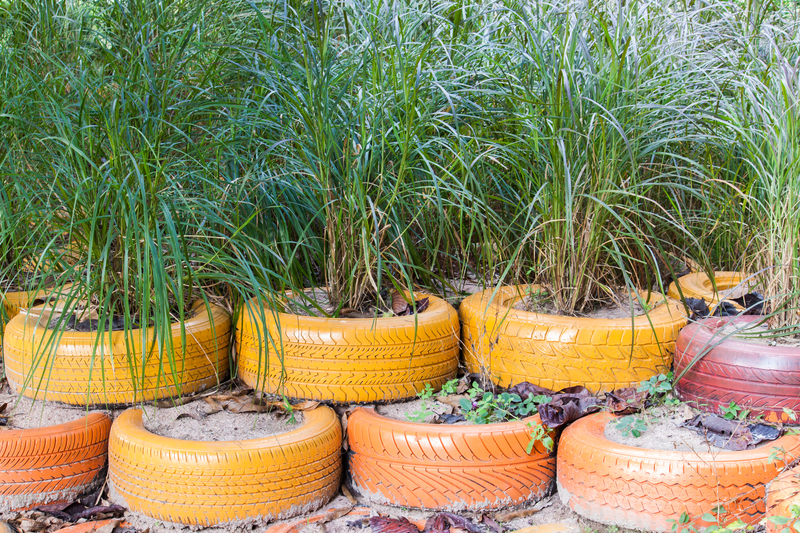Uncover Sustainable Methods to Dispose of Pots and Pans
If you've recently upgraded your cookware, you might be wondering how to dispose of your old pots and pans in a sustainable way. Traditional methods - like tossing them in the trash - aren't eco-friendly and can fill up landfills with metals and coatings that take centuries to break down. The good news? There are several sustainable ways to recycle, repurpose, or rehome your unwanted cookware. In this comprehensive guide, we'll take a closer look at the best methods to handle pots and pans disposal, ensuring minimal impact on the environment.

Why Practice Eco-Friendly Disposal for Pots and Pans?
Sustainably disposing of pots and pans isn't just about freeing up cabinet space. Cookware is often composed of mixed materials like stainless steel, aluminum, copper, and sometimes non-stick coatings, making them challenging for traditional waste streams. Eco-friendly cookware disposal helps:
- Reduce landfill waste and environmental impact
- Conserve natural resources by promoting recycling and upcycling
- Decrease demand for new raw materials, lowering energy consumption
- Support local communities and charities through donation
Let's discover the most sustainable ways to get rid of pots and pans when they're no longer needed in your kitchen.
Assessing Your Cookware: Reuse, Recycle, or Dispose?
Before throwing your pots and pans away, examine their current condition. Sustainable disposal depends on whether your cookware is still usable, slightly worn, or completely worn out. Here's a quick checklist:
- Like New or Gently Used: Donate, sell, or give away.
- Functional but Old: Upcycle, repurpose, or send to metal scrap recycling.
- Broken or Damaged: Recycle or dispose responsibly according to material type.
Common Types of Pots and Pans and Their Materials
Understanding the materials in your cookware will help determine the best sustainable disposal method. Most pots and pans are made from:
- Stainless steel
- Cast iron
- Aluminum
- Copper
- Non-stick (often Teflon-coated)
- Ceramic
Each material has a unique path for eco-friendly pots and pans disposal.
The Best Eco-Friendly Methods to Dispose of Pots and Pans
1. Give Cookware New Life Through Donation
If your used cookware is still in decent shape, donation is one of the best sustainable methods to dispose of pots and pans. Gently used pots and pans are always appreciated by:
- Thrift stores (Goodwill, Salvation Army, local shops)
- Charity kitchens and food banks
- Homeless shelters and transition homes
- Community centers and schools
Tips for Donating Cookware:
- Thoroughly clean and dry all items before donating.
- Check with the recipient organization for their specific needs and acceptance policies.
- Package fragile lids and handles securely to prevent damage.
By choosing to donate, you give your cookware a meaningful second life and help those in need.
2. Sell or Give Away Pots and Pans Locally
If you're looking for easy, zero-waste ways to get rid of old cookware, consider selling or giving away items you no longer need.
- Online Marketplaces: List items on platforms like Craigslist, Facebook Marketplace, or OfferUp.
- Community Groups: Post in "Buy Nothing" or local Freecycle networks.
- Garage Sales: Incorporate your cookware into a yard or estate sale.
This sustainable solution not only clears your cabinets but also promotes reuse within your community.
3. Recycle Your Cookware Responsibly
When pots and pans are no longer fit for cooking or donating, recycling is your next best eco option. Many pots and pans - especially those made from metal - can be recycled, but they often require special handling.
Metal Pots and Pans
- Stainless Steel, Aluminum, and Copper: These metals are highly recyclable. Take them to your local recycling center or scrap metal yard.
- Remove plastic handles or non-metal parts if possible before recycling.
- If your municipality offers curbside recycling for scrap metal, check first if cookware is accepted.
Non-Stick and Teflon-Coated Cookware
- Many recycling facilities do not accept non-stick coated cookware due to the chemicals used in coatings.
- Contact the manufacturer - some brands offer take-back or recycling programs for non-stick pans.
- Alternatively, seek out specialty recycling programs (like Terracycle or municipal hazardous waste events).
Cast Iron Cookware
- Cast iron pans are prized for their durability, but when they break, they are 100% recyclable at most scrap metal yards.
- Consider passing down or refurbishing cast iron before opting for recycling.
Pro Tip: Call your recycling center ahead of time to confirm what types of cookware they'll accept and whether you need to dismantle or prepare the items in a specific way.
4. Upcycle and Repurpose Old Pots and Pans
Upcycling is a creative and resourceful way to make use of cookware that's past its prime for cooking. Here are some innovative upcycling ideas:
- Turn pans into planters for flowers, succulents, or herbs.
- Create a kitchen wall rack or decor using attractive vintage pans.
- Repurpose lids as serving trays or clocks.
- Use cast iron pans as doorstops or bookends.
- Transform saucepans into storage containers for utensils, workshop tools, or organizing small household items.
With a little creativity, used cookware can have a second life outside the kitchen and stay out of the landfill.
5. Manufacturer Take-Back and Trade-In Programs
Some cookware brands and retailers now offer eco-friendly cookware disposal through take-back or trade-in programs. These initiatives ensure that old pots and pans are recycled or refurbished responsibly.
- Check with your cookware brand: Companies like Calphalon, GreenPan, and Le Creuset occasionally launch recycling take-back programs.
- Retailer programs: Certain stores accept trade-ins (sometimes in exchange for a discount on new cookware).
- Mail-in recycling: Some brands or third-party services allow you to send old cookware for proper recycling.
These sustainable methods for disposing of cookware are convenient, responsible, and can even make you eligible for savings on your next cookware purchase.
6. Dispose Responsibly If No Other Option Exists
In rare cases when reusing, recycling, or upcycling pots and pans is not possible, ensure you dispose of them according to your local regulations. Consult your municipality for special drop-off days or hazardous waste handling, especially for non-stick pans or cookware with coatings that shouldn't enter the waste stream.
Special Considerations by Material Type
How to Dispose of Stainless Steel Pots and Pans Sustainably
Stainless steel is 100% recyclable, making it one of the most sustainable cookware materials for end-of-life.
- Remove any non-steel parts like plastic handles or glass lids.
- Take the clean body to a local scrap metal facility, or participate in a cookware manufacturer's recycling program.
Sustainable Disposal for Non-Stick and Aluminum Cookware
Non-stick pans require special care:
- Check local recycling policy - many municipalities do not accept these via curbside programs.
- Look for mail-back programs or designated hazardous waste drop-off sites.
Responsible Cast Iron and Copper Cookware Disposal
Both cast iron and copper pans are highly valued by scrap yards and can be easily recycled. Clean thoroughly before drop-off. However, before recycling cast iron, consider gifting, as many collectors and enthusiasts prize even old or rusty skillets.
Bonus: How to Make Your Pots and Pans Last Longer (for Less Disposal)
The most sustainable cookware practice is to extend the life of your pots and pans. Here's how:
- Maintain with proper cleaning: Avoid harsh abrasives and follow manufacturer instructions for cleaning and seasoning.
- Restore and refurbish: Remove rust from cast iron, tighten loose handles, or take pans for re-coating/re-tinning if they're worth saving.
- Cook with care: Avoid overheating non-stick pans and don't use metal utensils on coated cookware.
- Store thoughtfully: Use pan protectors or soft cloths between stacked items to prevent scratches.
Adopting these habits will mean fewer items to dispose of over time, lowering your environmental footprint.
Key Takeaways: The Greenest Path for Pots and Pans Disposal
Uncovering sustainable disposal methods for old pots and pans not only helps the environment but also benefits communities and can even save you money. Here's a quick summary:
- Donate or sell: Give cookware a second lease on life whenever possible.
- Recycle metal and safe materials: Check with local facilities or manufacturers for proper handling.
- Upcycle and get creative: Repurpose pans as planters, decor, or organizational tools.
- Use take-back and trade-in programs: Many brands are assisting in sustainable disposal.
- Dispose responsibly when necessary: Follow local guidelines for hazardous or non-recyclable items.
By practicing these sustainable pots and pans disposal practices, you'll reduce landfill demand, conserve resources, and support a greener planet. The next time you declutter your kitchen, remember: being eco-friendly starts with small changes, one pot or pan at a time.

Frequently Asked Questions
Can all pots and pans be recycled?
Most metal cookware, such as stainless steel, aluminum, and cast iron, can be recycled at scrap metal facilities. Non-stick and coated pans are trickier; check with your local recycling center and explore manufacturer take-back programs.
What should I do with glass or ceramic lids?
Unfortunately, glass and ceramic lids are usually not accepted in curbside glass recycling. Try upcycling as trays or donating, or check specialized recycling centers.
Are there any eco-friendly cookware brands?
Yes! Many brands offer sustainable cookware products built to last, made with recycled materials, and provide end-of-life recycling programs. Look for brands like GreenPan, Caraway, and Made In for eco-conscious cookware solutions.
Conclusion: Choose Sustainability for Pots and Pans Disposal
Learning how to sustainably dispose of cookware is simple with the right information and a bit of creativity. Whether you opt to donate, recycle, upcycle, or utilize trade-in programs, you'll be making an environmentally responsible choice. The next time you clean out your kitchen, seek out sustainable options to dispose of your pots and pans--our planet will thank you!
```